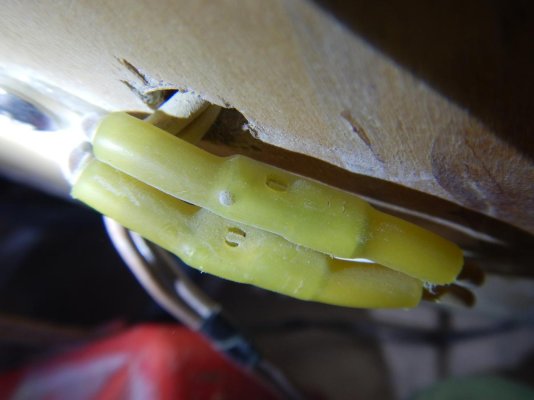foggysail,
I see where you are going, but those of us that happen to really care about this type of thing usually use heat-shrink connectors. These not only shrink to seal the ends, but also have a heat-activated adhesive that "glues" the shrunk connector to the wire sheath for a better seal. So, the edges will seal up, but, if there is a puncture, it won't.
If this had been a heat-shrink connector, I guess one of two things would have been the case. The dimple wouldn't have broken the heat shrink tubing, and it would have been fine. Or, it would have, and the heat shrink would have shrunk, exposing the "live" metal. If this was a +12V or "hot" AC wire, that could then touch a ground and short. Or though less likely, if it was a ground, it could tough a hot wire and short. Or, or, or.
I don't have the experience to tell you how this would have worked out with heat-shrink connectors. I don't have that type of crimper. And, although I have seen such crimps, I haven't seen them used with heat-shrink.
So, I'm not taking a position on the quality of that crimp, just because I really don't know. I'm just saying that, if that were heat-shrink tubing with heat-activated adhesive, such as many of us use, moisture would be sealed out of the edges, too.

